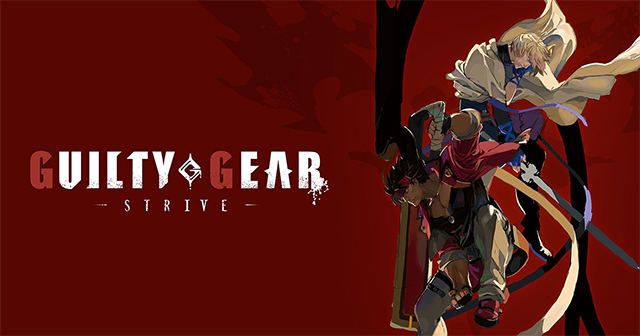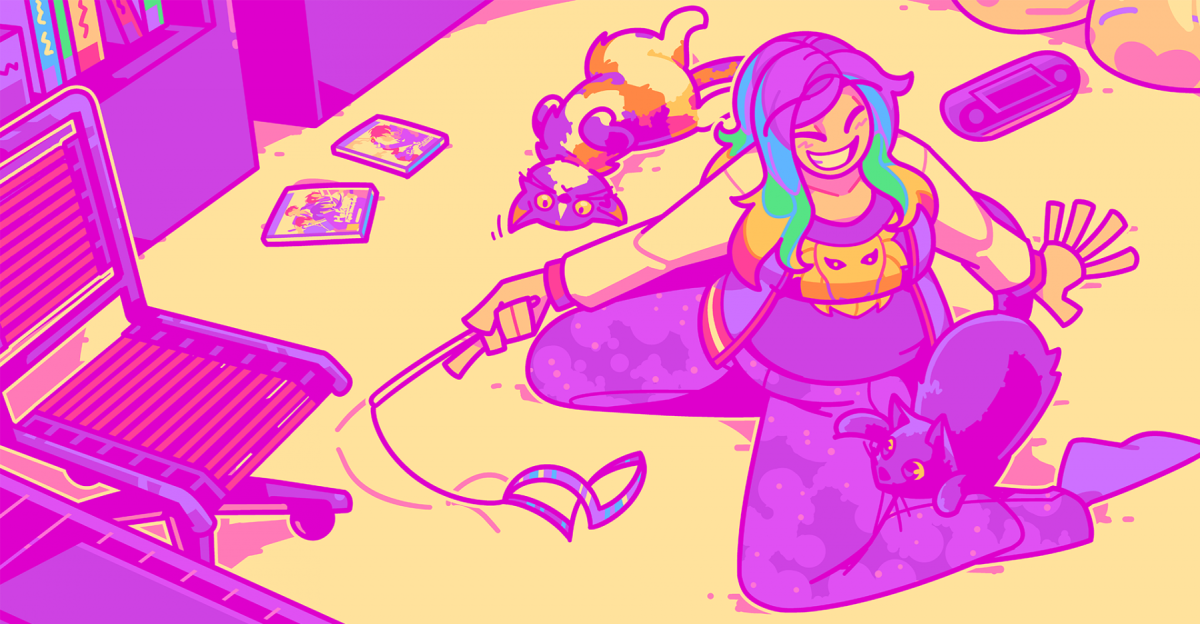
The world of fighting games is magical. That feeling when you pick up your controller or fight stick and you find that one character that just *clicks* with you. The countless hours of training with friends as you level up your skills while building a community together. The KOs. The PERFECT KOs. The DOUBLE KOs?! And the growth that comes from the losses to make you stronger… Ah yes, the fighting game world is truly magical. ✨
While I try to play the latest fighting games whenever they release, there are a few series that are very dear to me. Guilty Gear is one of them, and what a series it is! My first encounter with the series was through a friend back in my high school days. “If you like King of Fighters, you’re gonna got CRAZY for this game!”, they said as they handed me their copy of Guilty Gear X to try out at home. “This is as good as King of Fighters? No waaaay!” I grew up with King of Fighters, so this better be good! Famous last words, because then the game decided to completely destroy me with its style, characters, setting and its rockin’ music. And Instant Kills being a thing? Now that’s what I call POGGERS. So when Arc System Works offered me a chance to play in the Guilty Gear Strive beta early, I knew I had to take the chance and dive back into the franchise I grew to love so much.

Guilty Gear Strive picks up after the last games in the franchise, upping the graphical touches and style of the game while revamping the fighting engine in small, but significant, ways. I should note here that I haven’t played the Guilty Gear series since Xrd; I skipped Revelator and Rev 2, so I’m unfamiliar with any changes made from Xrd to Rev and Rev 2. That being said, one of the things I noticed at first with Strive is that the game felt both familiar and foreign to me at the same time. My partner felt the same way, with both of us realizing that our old “mains” felt so alien to us now that they weren’t as easy to play as unfamiliar characters were for us to pick up and play. For myself, I kept trying to use old combos and inputs for Sol that resulted in whiffs and punished attacks as the things I expected to happen didn’t, and for my partner, Faust felt much the same: similar, but different.
The same basic system that’s in all Guilty Gear games is present here, with the four face buttons being mapped to specific attack types, as well as a fifth button that, by default, is both the Dust and Throw button. A new addition (at least to me, because remember, I skipped a couple of games!) was the dash button, which would cause your character to automatically dash forward. I found this really awkward personally, but on a PS4 controller it’s mapped to L3 by default, so maybe that’s why. Even still, manually inputting the command to dash just felt, well, normal, so I’m not sure how useful the Dash command is, but perhaps I don’t see the utility in it yet. Other than that, there really aren’t many apparent changes to the Guilty Gear experience; you can still Burst and Roman Cancel, with similar blocking and negative penalty mechanics as well. One new feature is the wall break, which will send characters flying to a new area of the map, and is generally a reward for the aggressor based on a particularly strong corner combo.

The Strive beta roster had Sol Badguy, Ky Kiske, Axl Low, Zato-1, Millia Rage, Faust, May, Potemkin, Ramlethal Valentine, Chipp Zanuff, Leo Whitefang, along with newcomers Giovanna and Nagoriyuki. I was pretty happy with the variety on display in the beta, as each character felt unique with their own playstyles. This, in my opinion, was always one of the strengths of the Guilty Gear and BlazBlue series, as each character fits into specific archetypes, but plays totally differently from each other. Perhaps more than other fighting games, I always found this appealing about Guilty Gear, in the sense that I could find a character that I liked, and focus on them intently, knowing that they were wholly unique compared to the other characters on the roster. While their style might not be totally original compared to fighting game archetypes, the twists on each style (zoner, grappler, rushdown, etc.) that Guilty Gear applies still helps make them feel really fun and unique.
While returning players will likely go directly to their old mains, new players to the franchise are in for a treat with the wild and eclectic collection of characters that Strive will offer, and returning players are still in for some surprises; personally, I’m really digging Faust’s creepier new look! Giovanna and Nagoriyuki were fairly interesting additions to the roster. In some ways Nagoriyuki reminded me of BlazBlue’s Hakumen, although I can’t say that I fully grasped how to best utilize his blood meter and playstyle. Giovanna, on the other hand, felt almost overly familiar to me, as her quick striking kick attacks almost felt like a combination of various SNK characters. I wasn’t surprised at all to see a lot of her in the beta lobbies, and players seemed to pick up on what she had available really quickly, meaning that I expect a lot of newer players may find her an inviting and easy to use character to get started with.

In the Strive beta, players had the option to play through a short tutorial, use the basic training mode against a dummy (you heard me, Ky), and do local versus or online via lobbies. The offline options were fairly slim, but I appreciated the ability to play the beta locally, which gave us the most time to spend with each character and see what Strive had to offer. In what’s becoming an ArcSys staple, the online lobby system features a new, weird little menu overlay that lets you create a pixelated avatar to move around 2D lobbies with. This was really cute, although I did find occasionally knowing who was looking for a match hard to discern at first. The ‘tower’ that you enter ranks players by skill determined by your performance, which can have a somewhat deflating feeling when you lose a few matches and get demoted. That said, the game doesn’t stop you from moving higher in the tower if you want to, meaning that getting ‘demoted’ for experimenting with new characters won’t lock you out of the lobbies you had available to you before. I’m curious to see how this ranking system plays out in real time, as the beta featured a fairly small sample of players and meant that many of the ‘lower’ ranks of the Tower were totally empty, while higher ones were basically overpopulated! The lobby mini-game also promises some extra modes that weren’t currently playable, with the one I’m most curious about, fishing, sadly not being available during the beta test.
Once the lobby system started to make sense to me, I found that matches were fairly easy to get into. The game doesn’t let you pick characters before the match starts, so you have to select them in a menu first, and then look for opponents. This is pretty similar to other ArcSys games, like Granblue Fantasy: Versus and BlazBlue, but it’s bringing up just in case you like to switch between characters often. During the beta, I found that my success in getting a match going was about 50/50. I don’t think this was so much a Strive problem as it is a “playing a game online during a beta” problem, so I’m pretty okay with a 50/50 ratio to failed/successful connections, especially since once in a match, I only experienced 1 disconnect, and maybe 2 or 3 instances of major rollback and lag. Considering the pandemic addled world we still live in, fighting games are going to live and die based on their network capabilities, and what I saw in Strive’s beta made me cautiously optimistic that this quality of netplay would continue once the final game released. The sad reality is that this may not be true, as the larger player base is very likely not the same as the dedicated players in the beta this week, but hopefully things work out and Strive has a vibrant netplay community at launch, fingers crossed!

While it’s hard to comment on balance in something like a beta, especially one without a full roster, it does feel like most characters are fairly balanced against one another, with perhaps one exception: Potemkin. I was somewhat glad to see other chatter around people in the beta discussing this, but Strive’s version of Potemkin feels almost more oppressive than he usually can be, and my partner was shocked at how well they were able to resume playing Potemkin and get wins after having not played Guilty Gear in years. Although I doubt we’d go so far as to say he’s “busted” or anything of that nature, it did leave an impression that in the current build, it might be Potemkin’s world, and we’re all just living in it. Of course all of that can change by the next beta of physical release, so while it was an interesting observation, I personally am not worried about it being an issue in the final release; Potemkin was always a strong character, and I don’t see that changing much, except that his dominance in the beta is probably due to overperforming than anything else.
If anything, the beta certainly proved to me that Guilty Gear Strive has a lot to offer in a new, but familiar, way. Strive doesn’t shake up the formula in the way that Street Fighter V did, but instead provides a new take on the Guilty Gear formula. The same visual stylings are present, and characters speak and act in the way you’d expect, with big, overacted dialogue and familiar lines in battle. The infamous “Heaven or Hell” pre-match overlay is even more ridiculous now, with perhaps the most overwrought and weird phrase I’ve seen yet from an ArcSys game, but it grew on me in a very campy, silly way that still made me get hype for the gameplay!
One very interesting feature that the beta provided was the replay system. Strive saves a copy of every online match you play, and allows you to even follow players you’ve faced before to see their replays as well. In the offline mode, it gives you the option to save copies of the replays manually, and I have to say that I really dig this system. When your opponents are only online, labbing and keeping up with what they’re doing can be fairly difficult; with this replay system, you can create your own study tapes, hype reels, and other things, which was a feature I’d never really thought I’d see implemented into a game before.
Since I was playing on PS4, this also meant that I could easily edit and upload the videos myself to various social media, meaning that it would be pretty easy for people to create gameplay compilations and combo guides too. I think this sort of innovation speaks to some keen insight on ArcSys’s part; while the gameplay is fairly core and familiar, the replay functionality seems to show that ArcSys is aware of the huge, fan-made support and materials that keep their games going, and being able to instantly save your replays for these purposes really feels like a step in an interesting direction there.

Of course, as the Strive beta was winding down, ArcSys teased us with the reveal of I-No, who I really REALLY wished was playable in the beta! I’m excited to see what comes next from Strive, and playing the beta convinced me to get myself a copy when it comes out and dive into the Guilty Gear world all over again. Only time will tell what the full game will hold, but I think the beta showed me a lot of what was under the hood and gave me a pretty good indication of what would come from the full package, which left me craving for more.

Keep an eye out for more Guilty Gear Strive coverage; if I get the opportunity, I’d love to take another look at the game and keep you all updated! And if you want to keep in touch with what Arc System Works is up to, don’t forget to follow them on Twitter, Facebook, Instagram, YouTube and Twitch! Oh, and if you played the beta at all, make sure to complete ArcSys’ player survey to give them feedback on how they’re doing.
Until next time!
Omake:

When I finished my avatar so I can go into battle with style, I noticed… that it kinda looks like Claire Redfield? How did that happen?! Totally unintended, but I’m more than okay with that.
Did any of you get a chance to play the Guilty Gear Strive beta? Who’s your fave character in the Guilty Gear universe? Let me know in the comments!












